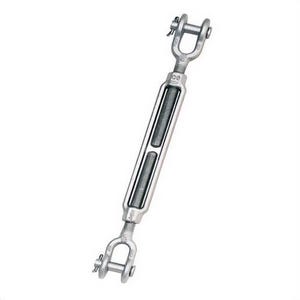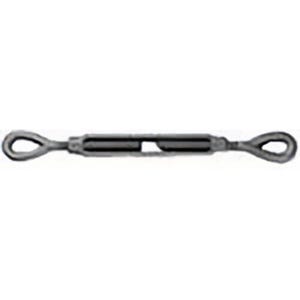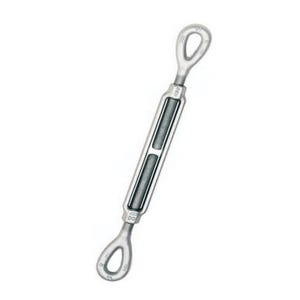Turnbuckles are adjustable inline tensioners used to remove slack and set precise tension on wire rope, chain, rod, and structural bracing. A turnbuckle body has opposite-hand threads—one left-hand and one right-hand—so turning the body pulls the end fittings together to shorten the assembly or unwinds to lengthen it. Most of what we stock is hot-dip galvanized steel for durable outdoor use, offering options that range from light-duty to heavy structural loads.
Types of Turnbuckles Available
Here at Hanes Supply, we offer a comprehensive range of end-fitting combinations, enabling you to match the connection style on both ends of your run.
Hook/Hook
Hook/Hook turnbuckles focus on speed and convenience to be able to frequently connect and disconnect on both ends. They are often used for temporary or controlled setups where the load path is predictable, and accidental unhooking isn't a concern. Since hooks are open fittings, they are less secure—avoid situations with slack, shock, or vibration that could cause a hook to slip off. Use these when setup speed is essential and you can maintain steady, inline tension.
Hook/Eye
The Hook/Eye combines the quick hook on one side with the security of a closed eye on the other. It offers a good compromise for tasks that require fast attachment on one end (like to a temporary anchor) and a more permanent connection on the other (usually with a shackle or link). This setup works well when retrofitting existing hardware on one side while allowing quick release on the opposite end. As with any hook fitting, keep the load straight and controlled.
Eye/Eye
Eye/Eye turnbuckles are the most versatile style because closed eyes on both ends provide secure, flexible attachment points. They naturally match with shackles, quick links, or eye bolts and help keep alignment through the load path. Eye/Eye is popular for more permanent setups, bracing, and situations with vibration because the closed design resists accidental disengagement. They are also an easy choice when you want standardized hardware on both ends of the run.
Jaw/Eye
Jaw/Eye turnbuckles feature a pinned connection (jaw/clevis) on one end and a closed eye on the other for maximum versatility. The jaw end is perfect for connecting directly to plates, lugs, or tabs where a pin is necessary, while the eye side interfaces smoothly with shackles or links. This setup reduces overall assembly length and can help control rotation at the pinned end. Be sure to match pin diameter and grip width to the mating hardware, and secure cotter pins after tensioning.
Jaw/Jaw
Jaw/Jaw turnbuckles have pinned connections at both ends, making them ideal for structural bracing and applications with dedicated connection plates or lugs at each end. With pins and cotters in place, they provide strong security and proper alignment under steady, inline tension. This type is especially useful when you need to prevent hook slip and want to avoid the extra hardware of separate shackles. Always check the pin diameter, grip width, and ensure both clevises sit flat against their mating plates.
Choosing the Right Turnbuckle
1. Pick the end-fittings that match your connections.
• Hooks are useful for temporary connections but are the least secure; use only where load path and control are assured.
• Eyes are closed and ideal when you connect with a shackle or quick link; many elongated eyes permit a shackle one size smaller to pass through for easier rigging.
• Jaws (clevis) pins are connected directly to lugs, pad eyes, or plates and are frequently used in bracing and guying. (Jaws typically come with bolts and nuts for smaller sizes and pins with cotters for larger sizes.)
2. Verify Working Load Limit and design factors.
Choose a WLL that meets or—preferably—exceeds your maximum service load once you’ve applied the necessary design factor for your use case (higher factors for shock, vibration, or critical service). As a reference, our range spans from roughly 500 lb on small sizes to 60,000 lb on the largest galvanized assemblies, so you can size the hardware to your actual peak loads rather than “making it fit.” Confirm that the entire system (shackles, pins, eye bolts, wire rope/chain, and anchors) meets or exceeds the same capacity—the system is only as strong as its weakest component.
3. Check the take-up you need.
Measure slack and the necessary adjustment range. We stock bodies with take-up sizes of 4.5 in, 6 in, 9 in, 12 in, 18 in, and 24 in, depending on the thread type and series. More take-up allows for a wider tuning range and greater installation flexibility.
4. Choose material/finish for the environment.
Our inventory specializes in hot-dip galvanized steel for corrosion resistance in outdoor and industrial settings. If you require additional materials or finishes for marine or specialty applications, please contact us and we’ll assist you in sourcing them.
5. Confirm thread compatibility for custom assemblies.
Turnbuckle bodies have opposite-hand threads. Many use UNC threads, while some end fittings feature modified thread forms to improve fatigue resistance. When mixing components, ensure the thread size and hand are correctly matched.
Best-Practice Use & Safety Notes
In-line Pulls Only
Turnbuckles are intended solely for straight, in-line tensioning. Side loads or angled pulls can bend the body, overstress the fittings, or significantly lower the Working Load Limit (WLL). Always align connection points so that force acts directly along the turnbuckle's centerline. If offset connections are unavoidable, use additional rigging hardware, such as shackles or links, to adjust the angle.
Secure the Adjustment
After you’ve reached the desired tension, it’s critical to lock the adjustment in place. On units with lock nuts, snug them tightly against the body. For designs that accept safety wire or pins, install them properly so vibration, shock loading, or repeated use won’t gradually loosen the threads. Unsecured adjustments are one of the most common causes of turnbuckle failure in the field.
Jaw Pinning Matters
Jaws come with the proper fasteners—usually bolts and lock nuts on smaller sizes, or clevis pins and cotter pins on larger models. These are not interchangeable. Always use the hardware as provided, and ensure cotter pins are correctly spread to prevent them from backing out under load. Missing or substituted pins present a serious safety risk and should be fixed immediately.
Shackle-Through Eyes
Elongated eyes are intentionally designed so that, in standard sizes, a smaller shackle can be reeved through the eye. This offers a secure, centered connection point when attaching to existing rigging, anchor points, or pad eyes. Using a shackle also helps protect the eye from direct wear, especially in applications where connections are cycled frequently.
Inspect Before Every Use
Besides proper technique, operators should visually check turnbuckles before applying tension. Look for bent parts, stretched eyes, cracked threads, or missing pieces. Even minor damage signs can weaken the hardware and must be fixed before loading.
Inspection & Compliance
For safety and compliance:
• Initial inspection: Before first use, verify identification, size, threads, and functionality.
• Frequent (pre-use) inspection: Visually inspect each shift or day before use—check body alignment, thread engagement, deformation, corrosion, jaw hardware, and ensure locking methods are secure.
• Periodic inspection: Conduct documented periodic inspections at least annually (more frequently in severe service) according to ASME B30.26 guidelines.
When unsure, take it out of service and replace it—adjustable hardware costs less than the downtime and risk involved.
Sizing Tips
Thread Diameter ≈ Strength Class
Larger thread diameters are linked to higher WLL; for example, typical ranges span from ~500 lb (¼″-class hardware) to 60,000 lb (2-½″ jaw-jaw). Select based on your design factor and dynamic effects.
Take-Up Range
If your system needs to span variable distances, such as temperature swings or seasonal guy line relaxation, upgrade to 12", 18", or 24" take-up bodies to maintain adjustment flexibility.
End-Fitting Mix
• Eye/Eye is the most versatile—pair with shackles for easy alignment.
• Jaw/Jaw performs well when you need to pin to plates/lugs.
• Hook/Eye or Hook/Hook are best for temporary rigging where speed is essential and the load path is controlled.
Why Choose Hanes Supply for Turnbuckles
Get the right turnbuckle fast. We stock leading brands like Crosby®, Green Pin® and Chicago Hardware®, plus component-level builds for heavy-duty jobs. Match WLL, take-up, and connection style without sacrificing compliance—most options are hot-dip galvanized and constructed to meet ASME B30.26.
Need help selecting? Please use the contact us form or call Hanes Supply at 1.888.426.3755 to speak with a professional.






































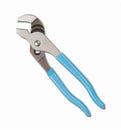 Channellock® 426 Tongue and Groove Plier, 7/8 in Nominal, 3/4 in L C1080 High Carbon Steel Straight Jaw, 6-1/2 in OAL
Channellock® 426 Tongue and Groove Plier, 7/8 in Nominal, 3/4 in L C1080 High Carbon Steel Straight Jaw, 6-1/2 in OAL
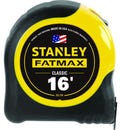 Stanley® 33-716 FatMax® Reinforced Tape Rule with BladeArmor®, 16 ft L x 1-1/4 in W Blade, Mylar® Polyester Film Blade
Stanley® 33-716 FatMax® Reinforced Tape Rule with BladeArmor®, 16 ft L x 1-1/4 in W Blade, Mylar® Polyester Film Blade
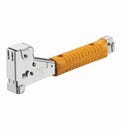 Arrow™ HT50 Professional Heavy Duty Tomahawk Hammer Tacker, Flat Crown Staple
Arrow™ HT50 Professional Heavy Duty Tomahawk Hammer Tacker, Flat Crown Staple
 Klein® D2000-9ST 2000 Heavy Duty Rebar Work Cutting Plier, 9-3/8 in OAL
Klein® D2000-9ST 2000 Heavy Duty Rebar Work Cutting Plier, 9-3/8 in OAL
 Estwing® E324S Framing Hammer, 16 in OAL, Smooth Surface, 24 oz Steel Head, Straight Claw, Steel Handle
Estwing® E324S Framing Hammer, 16 in OAL, Smooth Surface, 24 oz Steel Head, Straight Claw, Steel Handle
 DeWALT® Power-Stud®+ Powers® 7449SD1-PWR Expansion Wedge Anchor, 3/4 in dia, 10 in OAL, 7-1/2 in L Thread, Carbon Steel, Zinc Plated
DeWALT® Power-Stud®+ Powers® 7449SD1-PWR Expansion Wedge Anchor, 3/4 in dia, 10 in OAL, 7-1/2 in L Thread, Carbon Steel, Zinc Plated
 BBI® 777037 All Threaded Rod, 3/8-16, 12 ft OAL, Steel Alloy
BBI® 777037 All Threaded Rod, 3/8-16, 12 ft OAL, Steel Alloy
 BBI® 754072 Medium Split Lock Washer, 1/2 in Nominal, 18-8 SS
BBI® 754072 Medium Split Lock Washer, 1/2 in Nominal, 18-8 SS
 Primesource® 8CTDSKR Sinker Nail, 17/64 in, 2-3/8 in L, 9 ga, Vinyl Coated, Smooth Shank
Primesource® 8CTDSKR Sinker Nail, 17/64 in, 2-3/8 in L, 9 ga, Vinyl Coated, Smooth Shank
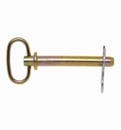 Campbell® T3899724 Hitch Pin, 1/2 in dia, 4-1/4 in L Usable, Forged Steel, Zinc Plated with Yellow Chromate, 5 Grade
Campbell® T3899724 Hitch Pin, 1/2 in dia, 4-1/4 in L Usable, Forged Steel, Zinc Plated with Yellow Chromate, 5 Grade


